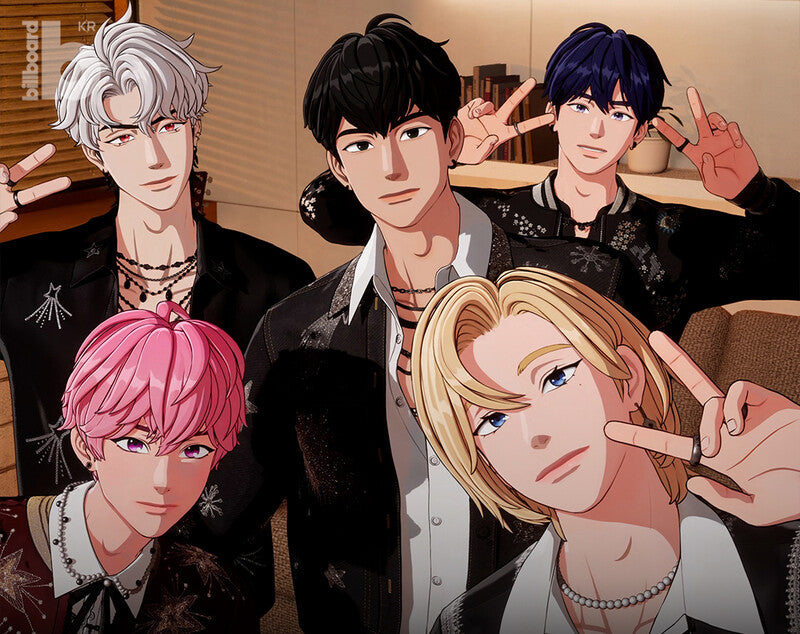 Key facts at a glance
Key facts at a glance
- When & where: August 15–17, 2025 at Olympic Park’s KSPO Dome, Seoul.
- Milestone: Reported as the first virtual idol group to headline the KSPO Dome.
- Fan access: The final night (Aug 17) was screened live in cinemas via an official live-viewing program.
Who (and what) is PLAVE?
PLAVE is a five-member fully virtual K-pop boy group under VLAST whose on-stage movement and expressions are driven in real time by human performers using motion-capture systems—not generative AI. Their blend of animation, live performance tech, and chart-minded pop has earned them mainstream traction since debut in 2023.
Inside “DASH: Quantum Leap”—three nights that reset expectations
Across three shows, PLAVE framed the KSPO Dome as a sandbox for high-spec stagecraft: large-format screens, precision mocap, and avatar-driven choreography stitched into arena-scale storytelling. Korean and international outlets highlighted the “history-making” aspect of a virtual group filling a venue typically reserved for top human acts—and the debate it sparked about whether virtual idols are a novelty or a sustainable part of pop’s future.
What stood out wasn’t just spectacle; it was latency-tight interaction. Because the performers drive their avatars live, PLAVE can banter, improvise, and respond to fan chants in real time—capturing much of what makes K-pop concerts feel alive while leaning on digital aesthetics that physical idols can’t easily pull off. (Reuters has noted the label’s emphasis on expanding proprietary mocap systems over AI, a choice that keeps the show feeling “performed,” not pre-rendered.)
The fan experience moved beyond the arena
If you couldn’t get to Seoul, the live-viewing program simulcast the final night to cinemas—part of a strategy to widen access and convert online fandom into communal, in-person moments. On site, organizers also operated dedicated engagement zones for PLLI (the fandom), extending the worldbuilding from screen to concourse.

Why these shows matter (and what people are debating)
- Authenticity: Does “real-time human performance through avatars” feel as authentic as seeing faces on stage? PLAVE’s model argues that authenticity is process, not appearance.
- Labor & longevity: Virtual idols can protect performers’ privacy and reduce burnout from hyper-visibility—though the work behind the avatars is still very human. (Reuters notes VLAST keeps performers’ identities private.)
- Creative ceilings: Arena-scale visuals let avatars do the impossible—gravity-defying camera moves and physics-bending choreography—without green-screen compromises.
- Access & monetization: Live-viewing and global fan ops show how virtual acts can be locally communal and globally scalable on day one.
- Industry precedent: Being reported as the first virtual idols at KSPO Dome establishes a benchmark other virtual and hybrid acts will be measured against.
What’s next on the Asia tour
After Seoul, the DASH: Quantum Leap itinerary extends across the region—with announced stops including Taipei (Aug 23), Hong Kong (Oct 1), Jakarta (Oct 18), Bangkok (Oct 25), and Tokyo (Nov 1–2), with venue and ticketing details provided via official notices.
Final take
“DASH: Quantum Leap in Seoul” didn’t just showcase new tech; it reframed what a “live idol” can be in 2025. By coupling human performance with avatar freedom—and by treating access (live-viewing, fan zones) as core design, not a side product—PLAVE turned a three-night residency into an industry thought experiment. Whether you see virtual idols as the future or a fascinating branch of K-pop, the KSPO Dome shows made one thing clear: **the vocabulary of live pop just got bigger.**


Share:
Yuri & Key Reminisce on K-Pop’s Choreo Chaos (and It’s Hilarious)
HOSHI x WOOZI’s BEAM Era: Inside the “WARNING” Fan-Concert Tour Across Asia